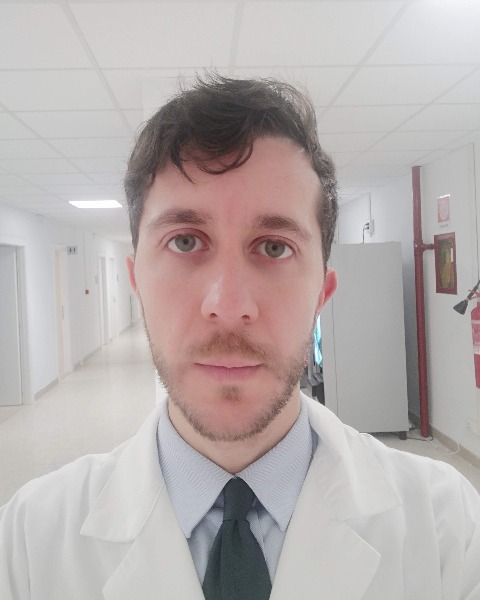Rapid Fire Abstracts
Additional value of CMR parametric mapping in tissue characterization of common benign pediatric cardiac tumors (RF_TH_205)
- AP
Alessio Perazzolo, MD
Radiology Resident
Università Cattolica del Sacro Cuore, Rome Italy, Italy - AP
Alessio Perazzolo, MD
Radiology Resident
Università Cattolica del Sacro Cuore, Rome Italy, Italy - PC
Paolo Ciliberti, MD
Bambino Gesù Children's Hospital and Research Institute, Rome. Italy, Italy
- VB
Veronica Bordonaro, MD
Bambino Gesu’ Children’s Research Hospital, Italy

- PC
Paolo Ciancarella, MD
Physician
Bambino Gesù Children’s Hospital IRCSS, Rome, Italy, Italy - LN
Luigi Natale, MD
Medical Doctor, Associate Professor of Radiology
Catholic University - Fondazione Policlinico Universitario "A. Gemelli" IRCCS, Rome (Italy), Italy 
Aurelio Secinaro, MD
Consultant Cardiovascular MR/CT
Bambino Gesu’ Children’s Research Hospital, Italy
Presenting Author(s)
Primary Author(s)
Co-Author(s)
Primary cardiac tumors are exceedingly rare in children, with most being benign. The most frequent types of pediatric cardiac tumors include rhabdomyomas, teratomas, fibromas, and hemangiomas. The use of Cardiac Magnetic Resonance (CMR) parametric mapping in the assessment of cardiac tumors remains largely unexplored. This study aims to evaluate the contribution of mapping sequences in CMR examinations of the most common pediatric cardiac tumors, focusing on their role in characterizing different tumor histotypes.
Methods:
A retrospective single-center investigation was conducted at Bambino Gesù Children's Hospital, involving pediatric patients (< 18 years) referred for CMR due to suspected cardiac tumors from June 2017 to November 2023. Tumor types were diagnosed based on signal characteristics, clinical history, potential genetic diagnosis of tuberous sclerosis, and, when available, histologic confirmation; additionally, mass mapping values (native T1, T2, and extracellular volume [ECV]) were assessed. Statistical analyses included interobserver variability assessment and comparison of mapping values among subgroups using ANOVA test.
Results:
Sixteen patients were enrolled, including hemangioma in 3 patients (19%), fibroma in 4 patients (25%), rhabdomyoma in 6 patients (37%), and lipoma in 3 patients (19%). Levene's Test for Equality of Variances showed that for both native T1 mapping and ECV, the variances in the different subgroups were not significantly different; however, for T2 mapping, there were significant differences in variances among the subgroups. The ANOVA analysis revealed significant differences in mass native T1 mapping and mass ECV values among the four subgroups.
Rhabdomyomas exhibited native T1 and ECV values similar to myocardium, while fibromas showed significantly elevated ECV values. Lipomas demonstrated virtually zero ECV values, and hemangiomas resembled blood pool ECV. Interobserver agreement for mapping analysis was excellent.
Conclusion:
Parametric mapping analysis is feasible and reproducible in pediatric cardiac tumors, providing valuable quantitative data for tissue characterization. ECV values appear to offer the most accurate differentiation among benign histotypes, complementing standard sequences for pediatric cardiac mass evaluation. In particular, mass ECV consistently resembles normal myocardium in rhabdomyoma, is extremely high (approaching 100%) in fibroma, equals to zero in lipoma, and matches blood pool ECV (1-Hct) in hemangioma.
Incorporating parametric mapping sequences into CMR protocols for pediatric cardiac tumor evaluation offers a promising approach to enhance tissue characterization. The different mapping values observed among tumor subtypes provide additional insights that could potentially improve diagnostic accuracy and guide clinical management decisions, by supplementing standard qualitative assessment methods with quantitative data.

